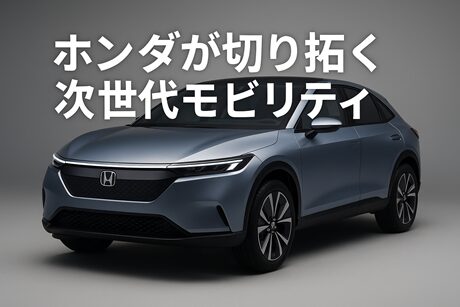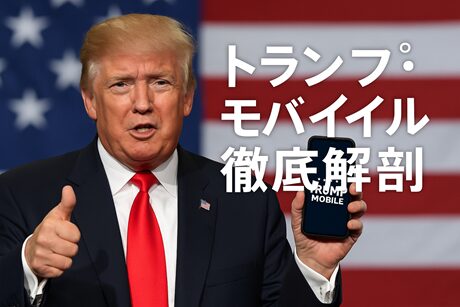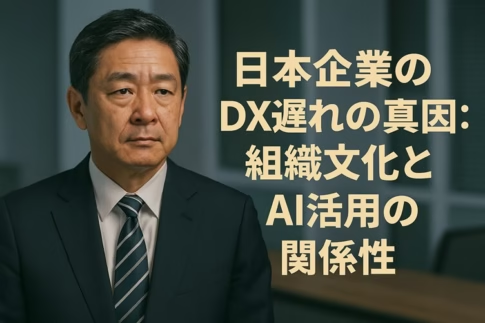目次
- 1 Honda’s Next-Gen Mobility: Electric Delivery & Space Tech
- 1.1 Fastport eQuad: Honda’s Electric Four-Wheeled Delivery Vehicle
- 1.2 Background and Challenges in the Last-Mile Delivery Market
- 1.3 Environmental Regulations and Zero Emission Trends in Europe
- 1.4 Small Mobility Operating Environment and Challenges
- 1.5 Success of Reusable Rocket Landing Tests and Their Significance
- 1.6 Innovation Brought by Reusable Rockets
- 1.7 Honda’s Technology Synergies and Development Structure
- 1.8 Honda’s Overall Space Business
- 1.9 Challenges in Space Development and Honda’s Response
- 1.10 Honda’s Overall Strategy: From Electrification to Intelligence
- 1.11 Autonomous Driving Technology and Logistics Applications
- 1.12 Environmentally Friendly Vehicle Trends and Applications
- 1.13 Synergistic Effects from Advanced Technology Development
- 1.14 Light Commercial Van (N-VAN) Use Cases
- 1.15 Urban Logistics Efficiency Initiatives
- 1.16 Honda’s Strengths and Corporate Culture
- 1.17 Conclusion: Challenges Toward a Sustainable Future
Honda’s Next-Gen Mobility: Electric Delivery & Space Tech
In June 2025, Honda Motor Co., Ltd. announced two groundbreaking initiatives aimed at expanding mobility domains and contributing to sustainability. The company unveiled plans to begin small-scale production of the “Fastport eQuad,” an electric four-wheeled vehicle designed to revolutionize last-mile delivery in urban areas, and successfully completed its first high-altitude landing test of a reusable rocket, reaching 300 meters. These initiatives clearly demonstrate Honda’s commitment to expanding mobility from the ground to space while creating new value.
Fastport eQuad: Honda’s Electric Four-Wheeled Delivery Vehicle
American Honda Motor Co., Inc., Honda’s U.S. subsidiary, has launched the “Fastport” business venture, with its first product being the “Fastport eQuad,” an electric-assist micromobility vehicle designed for last-mile delivery in urban areas. This innovative vehicle is designed to operate in bicycle lanes, offering a new approach to solving urban logistics challenges.
Detailed Product Specifications and Features
The Fastport eQuad is a single-rider delivery micromobility vehicle that uses pedal power as its primary propulsion, supplemented by electric assist. This unique design minimizes environmental impact while enabling efficient delivery operations.
The vehicle is powered by Honda’s swappable battery system, the “Honda Mobile Power Pack e:,” which enables quick battery exchanges and supports continuous operations. With a maximum range of 37 kilometers and a top speed of 19 kilometers per hour, the vehicle is optimized for nimble urban deliveries.
To improve energy efficiency, the vehicle features a regenerative braking system that captures energy during deceleration and charges the battery, contributing to extended range. An auto brake hold function ensures safety and convenience during frequent stops required in delivery operations.
Driver comfort has received careful attention. A UV-protected canopy shields delivery personnel from strong sunlight, while ventilation fans promote air circulation within the cabin. Additionally, a front cover protects both the driver and cargo from wind and rain. These features enable stable delivery services regardless of weather conditions.
Market flexibility is another notable feature. To meet diverse market needs in North America and Europe, Honda offers two vehicle sizes (large and small) along with corresponding cargo boxes. The vehicle’s length can be customized based on application requirements, accommodating everything from groceries to large packages. This flexibility allows for vehicle configurations optimized for regional regulations and delivery requirements.
Manufacturing takes place at a dedicated facility in Ohio, ensuring both quality control and production efficiency. This facility leverages Honda’s decades of manufacturing expertise to ensure stable supply of high-quality products.
Business Development Plans and Production Schedule
Honda plans to begin small-scale production of this innovative electric four-wheeled delivery vehicle in 2025. The primary target markets are North America and Europe for last-mile delivery applications, with operations intended for bicycle lanes in compliance with regional regulations.
According to a company spokesperson, initial deployment will focus on B2B markets, including logistics companies and fleet management companies, with no immediate plans for individual consumer sales. This strategic decision aims to accelerate market penetration by prioritizing enterprise customers who can efficiently operate and manage large fleets.
Full-scale production is scheduled to begin in the United States in summer 2026, with the goal of establishing production systems by mid-2026. This phased approach allows feedback from initial operations to be incorporated into product improvements, enabling evolution toward products better suited to market needs.
Prior to the 2026 production launch, Honda plans to conduct demonstration tests in collaboration with logistics and delivery companies in North America and Europe. These tests will thoroughly verify vehicle performance, operational efficiency, and customer satisfaction in real delivery environments, advancing adaptation to local customer needs.
Comprehensive Service Deployment Through FaaS Platform
The innovation of the Fastport business extends beyond product provision. Honda aims to provide comprehensive services combined with the Fastport FaaS (Function as a Service) platform, supporting more efficient and cost-effective delivery operations.
This platform includes maintenance systems for batteries and cargo boxes. Regular inspections and preventive maintenance maximize vehicle uptime while minimizing unexpected downtime.
Real-time monitoring capabilities for vehicle operating status, battery levels, and driving data are also provided. Fleet managers can leverage this data to optimize delivery routes, efficiently deploy vehicles, and optimize maintenance schedules.
Furthermore, over-the-air (OTA) software updates enable functional improvements. New features and performance enhancements can be delivered remotely, continuously increasing vehicle value and providing customers with the latest technology.
Background and Challenges in the Last-Mile Delivery Market
Surging Delivery Demand and Japan’s “2024 Problem”
Urban logistics faces a major turning point due to multiple factors. Delivery demand continues to increase annually due to the rapid growth of e-commerce users, including online shopping and food delivery services. Consumer habits for online shopping have become firmly established, particularly following the COVID-19 pandemic, heightening expectations for rapid product delivery.
This increased demand has led to smaller package sizes and more frequent transportation. While truck-based freight transportation dominates in Japan and transport volume has remained flat over the past decade, per-shipment cargo volume is declining, indicating increased demand on a shipment count basis. This trend leads to decreased delivery efficiency and increased logistics costs.
Japan’s logistics industry faces severe labor shortages due to population decline and aging demographics. The truck driver shortage is particularly acute, with logistics costs rising even as parcel delivery volumes increase.
In April 2024, annual overtime limits of 960 hours were imposed on truck drivers. This “2024 Problem” raises concerns about logistics stagnation. The regulations require more drivers to maintain the same transport volume, but securing human resources remains difficult.
Expectations and Challenges for Automation Technologies
Against this backdrop, the logistics industry seeks automated delivery robots and drones to overcome logistics challenges. Micromobility solutions like Honda’s Fastport eQuad have the potential to contribute to last-mile delivery efficiency in urban areas.
Automated delivery robots travel slower and smaller than automobiles, avoiding obstacles while automatically transporting packages, offering potential for broad indoor and outdoor applications. Deployment is expected to begin in urban areas, with accelerated urban adoption as unit costs decrease and social acceptance grows.
Drone delivery captures rural needs for implementation, with potential for cost-sharing by residents and delivery businesses, and easier access to municipal cooperation and subsidies. Moving through the air, drones are unaffected by road traffic congestion and are expected to support small package delivery.
However, expanding cargo volume in rural areas remains difficult, and enabling drone flights in densely populated areas will take time. In remote and mountainous areas with poor road conditions and longer delivery distances, compatibility with automated delivery robots is limited. For islands, robots may be applicable for on-island operations, but drones are better suited for mainland connections.
Building Efficient Logistics Systems
Individual automation and efficiency improvements by logistics providers may create overall inefficiencies through excessive depots, robots, and drones, along with overlapping service areas. Therefore, inter-operator cooperation and shared use of infrastructure including depots, robots, drones, 3D maps, and data standards is considered ideal from cost burden and utilization perspectives.
Establishing micro-hubs is also important for urban logistics efficiency and environmental load reduction. The concept involves establishing hubs at certain distances from city centers, consolidating packages, and transferring them to smaller vehicles (bicycles, small electric trucks, etc.) to reduce vehicles entering city centers.
In Amsterdam, cargo bikes proved insufficient for transport volume, leading to a transition to small electric trucks and recognition of the need for micro-hubs closer to city centers. The city has limited expectations for automated delivery robots given its road and bicycle lane infrastructure, believing separate road development would be necessary.
Environmental Regulations and Zero Emission Trends in Europe
In Europe, municipalities actively promote initiatives to reduce environmental impact, targeting CO2 emission reduction and pollution prevention in urban logistics. Cities introducing zero emission zones by 2025 are increasing, forcing major transitions in the logistics industry.
These initiatives include support for cargo bike and low-emission vehicle adoption, consolidation through micro-hub establishment, and charging infrastructure expansion. Amsterdam has decided to pursue zero emissions for all vehicles, not just logistics vehicles, and is introducing emission-free zones. The system imposes strict penalties on non-compliant vehicles.
In Europe, faster travel speeds due to electric bicycle proliferation have led to considerations of speed limits in bicycle lanes and road travel. These environmental changes increase demand for new mobility solutions like the Fastport eQuad.
Securing and managing loading spaces presents another important challenge. Plans for loading area development in traffic-restricted zones, introduction of technological systems for parking space increase, management and control, and installation of electric charging points are under consideration. Digital technology applications include logistics vehicle traffic management, enforcement against unauthorized vehicles, and display of construction information and impassable roads.
Small Mobility Operating Environment and Challenges
Surveys on small electric mobility riding comfort show 80% report “discomfort” in dedicated bicycle lanes, with about 40% feeling insufficient space between vehicles on city roads. Danger levels when avoiding obstacles like parked vehicles are also cited as challenges.
In response, development of road cross-sections that are safe and acceptable for pedestrians, bicycles, and small electric mobility users, along with safety education content for non-licensed users, is progressing. Infrastructure development and user education approaches are necessary for safe operation of new mobility solutions like the Fastport eQuad.
Success of Reusable Rocket Landing Tests and Their Significance
Honda announced the successful completion of its first high-altitude landing test up to 300 meters using its self-developed reusable rocket test vehicle. This success marks an important milestone demonstrating Honda’s full-scale entry into the space sector.
Test Details and Technical Achievements
The test was conducted at 4:15 PM on June 17, 2025, at Honda’s dedicated test facility in Taiki-cho, Hiroo-gun, Hokkaido. This facility was established in 2024 and has a track record of conducting engine combustion tests and hovering experiments.
The test vehicle measures 6.3 meters in length and 85 centimeters in diameter, with a relatively compact size weighing 900 kg dry and 1,312 kg wet (with propellant). This miniaturization enabled efficient technical verification while ensuring test safety.
The primary objectives of this test were to demonstrate elemental technologies necessary for rocket reuse, including vehicle stability during ascent and descent and landing functions. The test achieved remarkable precision in targeted landing behavior, reaching an altitude of 271.4 meters with a landing position error of just 37 centimeters from the target and a flight time of 56.6 seconds.
This high-precision landing demonstrates the fruits of Honda’s control technology expertise. Detailed data acquisition during ascent and descent was also successful, providing valuable information for future development. Honda’s official X (formerly Twitter) account published a video showing the smooth operation from rocket ascent to landing.
Thorough Safety Measures
Safety was the top priority during the test. A 1-kilometer radius exclusion zone was established with strict access control through signage, gates, and security personnel deployment.
The exclusion zone was set by adding safety distances to account for potential impact from blast, component scatter, and fireballs to the area where the test vehicle might fall if thrust was terminated. Additionally, flight restriction ranges and speed/attitude conditions were set to prevent exceeding the exclusion zone, with safety systems installed to ensure compliance.
Innovation Brought by Reusable Rockets
Differences from Conventional Rockets and Advantages
Reusable rockets are based on a fundamentally different concept from conventional expendable rockets. The ability to operate the same vehicle repeatedly in short timeframes promises significant launch cost reductions.
Reusable sounding rockets not only dramatically increase observation opportunities but also provide qualitatively different experimental environments compared to traditional sounding rockets through high trajectory and attitude flexibility, subsonic flight, quasi-static state achievement, and recovery with repeated flight capabilities.
This enables precise measurement of temporal and spatial trends in Earth’s atmospheric environment, improved understanding of atmospheric phenomena, and contributions to global environmental change research. In microgravity research for life sciences and materials science, high-frequency and accessible experimental opportunities with payload recovery and quality microgravity environments are expected to stimulate research activity and outcome creation.
Technical Challenges and Solutions
Technical demonstration of reusable rockets involves numerous challenges. Major issues include repeated operation and life evaluation of liquid hydrogen/liquid oxygen engines, multiple use of cryogenic propellant tank insulation, return and landing flight, propellant supply system devices, propellant behavior understanding and tank pressure control, cryogenic propellant management with circulation pumps, landing behavior and landing leg shock absorption, and hydrogen leak detection systems.
Honda addresses these challenges by leveraging its accumulated technologies. Combustion technologies from injectors and hydrogen engines, pump technologies from aircraft and race vehicles, and autonomous driving technologies from automobiles are all applied to reusable rocket development.
Honda’s Technology Synergies and Development Structure
Honda’s strength in reusable rocket development lies in its high level of vertical integration. Design, development, and manufacturing of major components are performed by Honda’s prototype teams, enabling technology accumulation and rapid improvements.
Honda began research and development of reusable rockets in 2019, aiming to reduce costs and improve convenience. The company pursues this technology anticipating significant future advances in data technology, accompanying expansion in satellite utilization, and increased rocket demand.
The goal is to develop rockets capable of reaching suborbital trajectories by 2029, with future commercialization of space business also in view. This ambitious goal aligns with Honda’s 2050 carbon neutrality target.
While SpaceX leads in reusable rocket development, Honda incorporates agile development methods cultivated through F1 participation, advancing development with speed. By fearlessly creating prototypes quickly and repeating tests, technological maturity improves.
Honda’s Overall Space Business
Honda’s space business extends beyond rocket development, deploying a comprehensive strategy built on three pillars.
The first pillar is the successfully tested reusable rocket development. This aims to realize low-cost, environmentally friendly space access, significantly increasing opportunities for satellite launches and space experiments.
The second pillar is lunar surface energy system development with JAXA. Building circulating renewable energy systems will support sustainable activities on the lunar surface. This technology can also be applied to renewable energy use on Earth, creating synergistic effects.
The third pillar is space robotics technology research. Leveraging Honda’s humanoid robot research and development experience, the company explores space robot applications using proprietary AI-supported remote operation functions. As space operations pose dangers to humans, robotics technology importance is expected to increase.
The catalyst for rocket research was Honda’s philosophy of “expanding human potential through the power of mobility” combined with young engineers’ dreams of “building rockets.” This fusion of passion and corporate philosophy realized the challenge in space business.
Honda announced its “Challenge to the Space Domain” as a new frontier challenge in September 2021 and established a space business division in the United States in late 2024. These organizational efforts steadily advance preparations for space business commercialization.
Challenges in Space Development and Honda’s Response
A difficulty in space domain development is that Honda’s cherished “Three Realities” principle (genba/actual place, genbutsu/actual thing, genjitsu/actual situation) cannot be established. The space environment remains under investigation, and once launched, on-site confirmation becomes impossible, potentially making trouble cause identification difficult.
However, Honda’s corporate culture embraces a hands-on approach: “First, let’s try doing it ourselves.” This translates to strength in F1, fuel cells, and space development—not just thinking at desks but actually building, breaking, and verifying things to grasp their essence.
Toshihiro Mibe, President and CEO of Honda Motor Co., Ltd., expressed joy at the advancement of reusable rocket research through this successful landing test, commenting it was “a meaningful initiative leveraging Honda’s technological capabilities.” As space business lacks precedents, value creation is pursued not only through quality and performance improvements but from the perspective of “what kind of world can be created in space.”
Honda’s Overall Strategy: From Electrification to Intelligence
These new businesses are positioned as part of Honda’s major strategic shift. The company is adjusting its four-wheeled vehicle electrification strategy, recognizing slowing EV market expansion due to uncertainty in environmental regulations and trade policies that assume EV proliferation across regions.
To maintain competitiveness and continue providing new value through mobility in this environment, Honda has determined that strengthening “intelligence” in addition to “electrification” is key. Future directions include “intelligence-centered EV and hybrid vehicle competitiveness enhancement” and “business foundation strengthening through powertrain portfolio review.”
In the intelligence domain, proprietary next-generation ADAS (Advanced Driver Assistance Systems) serve as key drivers, with plans to promote new value creation through partner collaborations. This comprehensive approach aims to enhance overall mobility value beyond mere autonomous driving technology development.
Autonomous Driving Technology and Logistics Applications
Autonomous driving mobility service introduction is positioned as one means of solving regional challenges and realizing future visions. Clarifying regional mobility challenges and autonomous driving introduction purposes is important.
Local governments, transportation operators, and autonomous driving technology developers collaborate to consider service content, vehicles, operating routes, and revenue plans. Last-mile transportation is expected to increase outing opportunities and trunk public transportation utilization rates.
Autonomous driving services attract attention not only for regional residents like elderly and students but also for mixed passenger-freight transport (combining human and goods movement). This can significantly improve regional transportation efficiency.
Operating routes are selected considering not only demand but also ODD (Operational Design Domain) where autonomous vehicles can operate and driving environment safety. This involves various factors including road infrastructure conditions, traffic volume, and weather conditions.
Ensuring Autonomous Driving Safety
Ensuring autonomous driving safety requires systems to operate at safety levels where “reasonably foreseeable and preventable accidents do not occur.” This necessitates comprehensive identification of risk scenarios including road traffic environments, vehicle behavior, other traffic participants, weather conditions, and emergencies.
Utilizing infrastructure information such as roadside sensors can cover blind spots and improve operational smoothness. System design requires determining recognition sensor detection distance/range and control actuator specifications, with redundancy settings for safe stops during failures or functional limits.
Regulatory Compliance
Level 4 autonomous driving mobility service implementation requires obtaining permits as “specified automated driving” under road traffic laws. This requires deployment of specified automated driving supervisors and on-site response personnel. Compliance with numerous related regulations including road transportation laws, road vehicle laws, and road laws is also necessary.
Japan was the first in the world to establish international standards for low-speed autonomous driving remote support systems. This is expected to enhance the international competitiveness of Japanese autonomous driving technology.
Improving Social Acceptance
Improving social acceptance requires alleviating user concerns and promoting technological understanding. Effective methods include test rides, surveys, public relations activities (vehicle wrapping, flyers, SNS), events, and educational programs for students. Building cooperative relationships with local residents and stakeholders (transportation administration, companies, etc.) is also important.
Regarding business viability, autonomous driving mobility services often struggle to sustain operations through fare revenue alone, leading to consideration and implementation of non-fare revenue sources including sponsorships, subsidies, data sales, advertising, and mixed passenger-freight transport. Cost reductions through unmanned driving and back-office function consolidation, along with revenue expansion through increased service frequency, are also expected.
The government strengthens support systems for autonomous driving social implementation through expedited review procedures, accompanying support via regional committees, clarification of review content/procedures/formats, and publication/sharing of past review cases.
Environmentally Friendly Vehicle Trends and Applications
Environmentally friendly vehicles contribute to low-carbon society realization and are expected as new mobility categories for efficient urban transportation, tourism and regional promotion, and mobility support for elderly and child-rearing generations.
Ultra-Compact Mobility Potential
Sidewalk-capable (seated) ultra-compact mobility operates at low speeds and is easy to drive, allowing mobility-restricted individuals to travel safely and securely. Small vehicle size enables entry into alleys and large buildings, allowing visits to many places and new discoveries without fatigue.
Car-sharing systems supporting movement in city centers and tourist areas are needed. In suburban residential areas, they support access to bus stops and facilitate movement before and after public transportation. In depopulated areas, they are expected to serve as safe and secure transportation for elderly residents.
Road-capable ultra-compact mobility can operate at sufficient speeds in towns and tourist areas, enabling quick travel. With adequate cargo capacity, users can carry many items without fatigue while saving travel time. They contribute to quiet, clean community development with small, economical parking spaces.
In logistics, they enable delivery within shopping district malls, arcades, and narrow alleys, contributing to loading/unloading parking resolution. Driving spaces and parking from joint loading/unloading facilities to shopping districts must be secured.
Multi-faceted Electric Vehicle (EV) Applications
Electric vehicles are quiet and clean, enabling entry into city centers while providing environmentally friendly transportation without exhaust emissions. Preferential measures under consideration include integrated charging facilities with stores, parking development incentives, and enabling EV-only access to city centers.
In suburban residential areas, joint electricity self-sufficiency enables energy independence and community development, while use for mobility-restricted support strengthens regional capabilities. In depopulated areas, joint self-sufficiency in electricity and agricultural products strengthens settlement independence and contributes to regional community strengthening through mutual assistance.
Introduction as day care facility and hospital shuttle vehicles is expected to reduce transport burden and resistance to hospital visits and rehabilitation. For trunk transportation, electric trucks produce no exhaust emissions and may be exempt from nighttime urban traffic restrictions. Platooning functions can also reduce cargo transfer burden.
Electric Buses and Community Transportation
Electric buses operating as community buses can enter malls, allowing users to travel directly to desired stores. This saves time, leads to new discoveries, and reduces travel fatigue.
At stations, entry into underground spaces directly below railway platforms is possible, with elevator access from exhaust-free underground bus terminals to platforms and city areas, facilitating movement before and after public transportation.
Synergistic Effects from Advanced Technology Development
Accident avoidance and autonomous driving functions improve safety, allowing anyone to travel more safely and securely. Autonomous driving functions enable vehicle repositioning, realizing attractive space creation through parking space consolidation and conversion to pedestrian areas.
Dispatch optimization functions reduce waiting times, improving convenience for immediate use when desired. Information distribution functions provide recommended store information, expected to stimulate browsing behavior.
Light Commercial Van (N-VAN) Use Cases
In the current logistics industry, light commercial vans (N-VAN) are popular for delivery services. Despite being compact, they offer spacious cargo areas with high ceilings for ample cargo capacity. The passenger seat can be folded to achieve low, flat cargo floors.
Vehicle taxes are low, particularly for commercial use at just 3,800 yen annually, making them very economical. Disadvantages include biennial vehicle inspections and somewhat higher voluntary insurance premiums for commercial use. However, some insurance companies like Mitsui Direct have begun offering corporate contracts, potentially enabling insurance cost savings.
Urban Logistics Efficiency Initiatives
Joint delivery consolidates packages for multiple customers, improving loading rates and delivery route efficiency. This simultaneously achieves improved vehicle utilization and reduced environmental impact.
Off-peak transportation (night delivery and time restrictions) represents another important measure. Promoting and incentivizing off-hours delivery contributes to congestion relief and emission reduction. However, noise countermeasures and working condition arrangements are necessary.
Honda’s Strengths and Corporate Culture
Honda’s strengths include abundant human resources, a culture enabling dream challenges, and equality before technology and ideas where opinions are sought regardless of position. With a history of continuous challenges to create new value, Honda aims for challenges that make people say, “That’s so like Honda to notice that.”
By combining knowledge from cars, aircraft, robots, and other fields to challenge space, Honda expects to produce unique results. The company aims for top market share in electric motorcycles while considering commercialization in space.
Conclusion: Challenges Toward a Sustainable Future
Honda’s announcements of the Fastport eQuad electric four-wheeled delivery vehicle and successful reusable rocket testing clearly demonstrate the company’s commitment to expanding mobility from ground to space while pursuing sustainability and new value creation.
The Fastport eQuad addresses urban logistics challenges, particularly Japan’s “2024 Problem,” by enabling environmentally friendly and efficient last-mile delivery. Meanwhile, reusable rockets significantly reduce space access costs and open new possibilities for space utilization.
These technologies are individually innovative but hold even greater significance within Honda’s overall strategy. The shift from electrification to intelligence, autonomous driving technology applications, and environmentally friendly vehicle promotion all integrate toward realizing a sustainable society.
Honda’s philosophy of “expanding human potential through the power of mobility” remains consistent from ground transportation to space challenges. Honda’s initiatives, balancing technological innovation with solving social issues while creating new value, hold the potential to significantly transform the future of mobility.
Honda’s challenges continue toward specific goals: Fastport eQuad mass production in 2026 and suborbital capability by 2029. As these technologies are commercialized and proliferated, our lives will become more convenient, environmentally friendly, and full of possibilities.
Sources: This article was created based on various press materials and public information.
Reference Sites:
- Japan Planning Information Center
- Nikkei – Honda Related Article
- Honda Global RX (X)
- CORDIS EU Research Project 101069892
- CORDIS EU Research Project 101077587
Related Link: Honda Motor Co., Ltd.














Leave a Reply